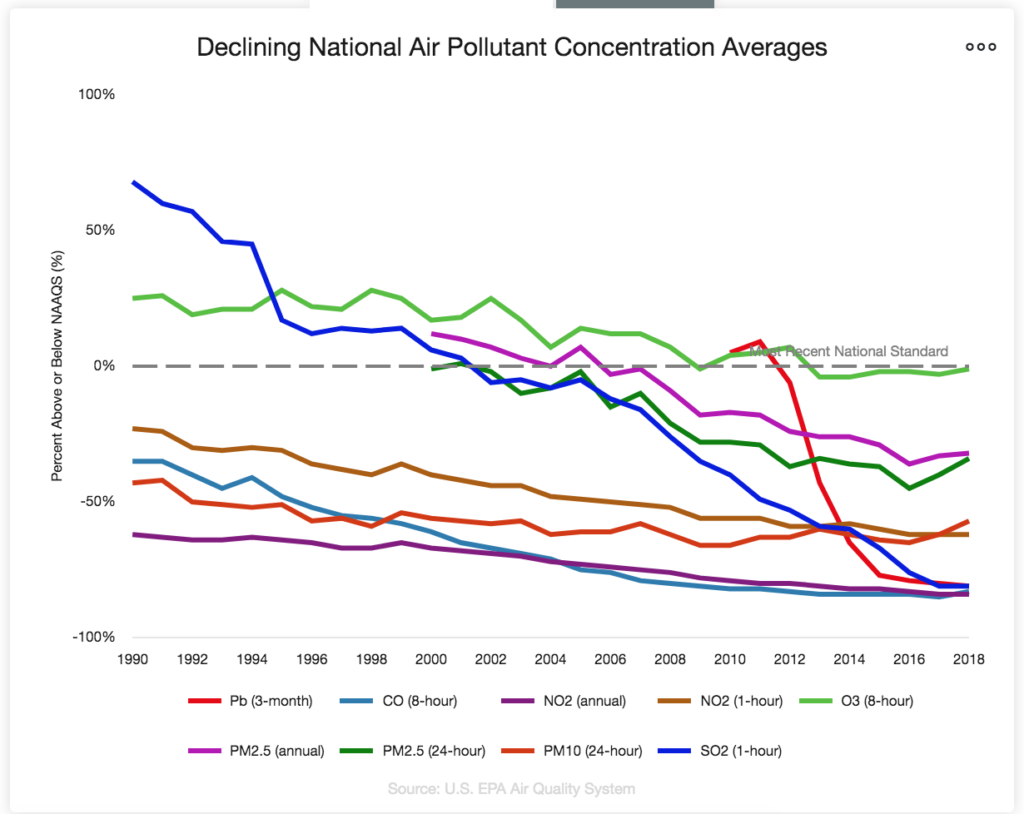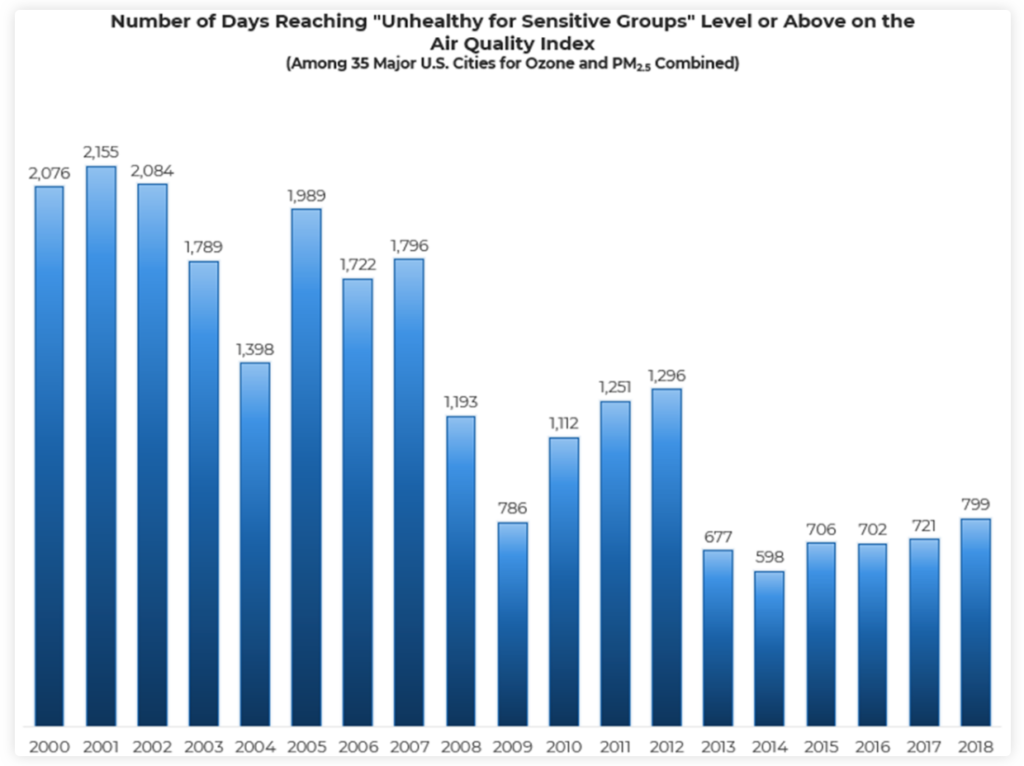There is an increasing awareness of how air pollution is affecting health. As McHardy et al. (2020) report in the Health Affairs blog:
Ambient air pollution is a key risk factor for preventable noncommunicable diseases (NCDs): It kills more than four million people every year globally. Worldwide, air pollution is responsible for 29 percent of all deaths and disease from lung cancer, 17 percent from acute lower respiratory infection, 25 percent from ischaemic heart disease, 43 percent from chronic obstructive pulmonary disease, and 24 percent of all deaths from stroke.
In addition to these direct impacts on individual health outcomes, air pollution causes indirect health harms on other key determinants of individual health. For example, with dangerously high levels of air pollution, people cannot go outside to exercise or cannot perform work during business hours. Every aspect of an individual’s health is affected.
The Health Affairs blog piece also describes the extremely poor air quality in New Delhi.
How is air quality in the U.S? Well, pollution has been improving in recent decades. The EPA’s 2019 report “Our Nation’s Air” , the amount of air pollutant concentration and number of “unhealthy for sensitive group” days declined in recent decades.


How is pollution in my city (Los Angeles)? Despite improvements in recent decades, the answer is not very good. As the L.A. Times reports:
…researchers estimated that there were more than 41 metric tons of NOx in the air above L.A. in 2006; by 2010, there were around 27 metric tons. That was the largest drop among all the cities over that time period. However, since 2010, the decline slowed and nearly flattened, dropping only to 25 metric tons in 2013. That left Los Angeles with NOx levels high above second-place Chicago (with nearly 17 metric tons) and third-place Detroit (just under 12 metric tons).
from Healthcare Economist https://ift.tt/2UJ7w6x
via IFTTT

No comments:
Post a Comment